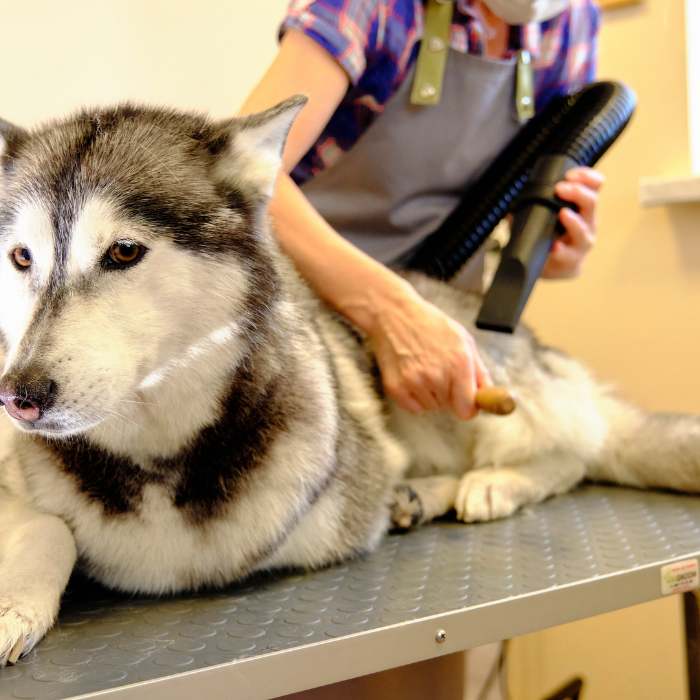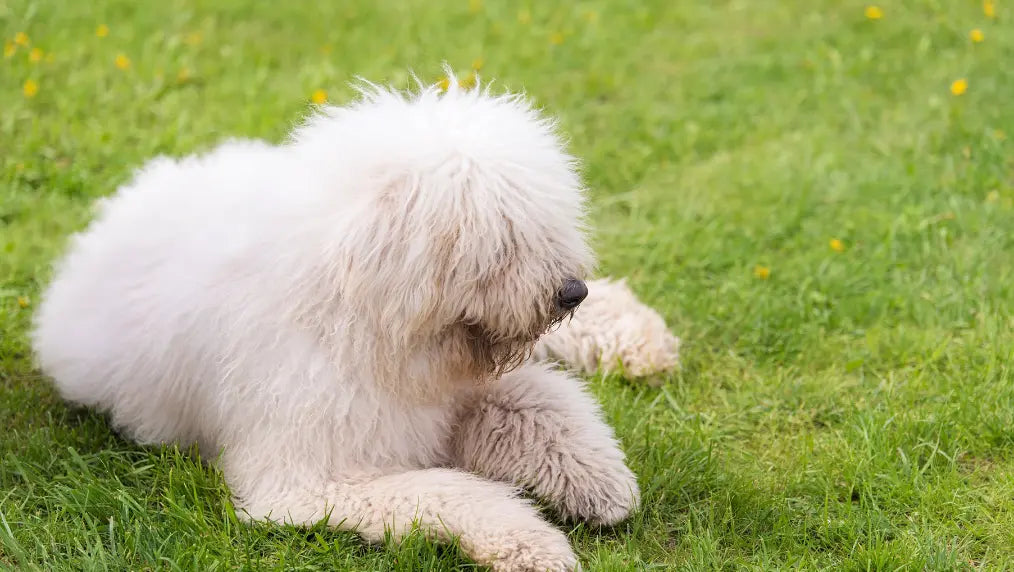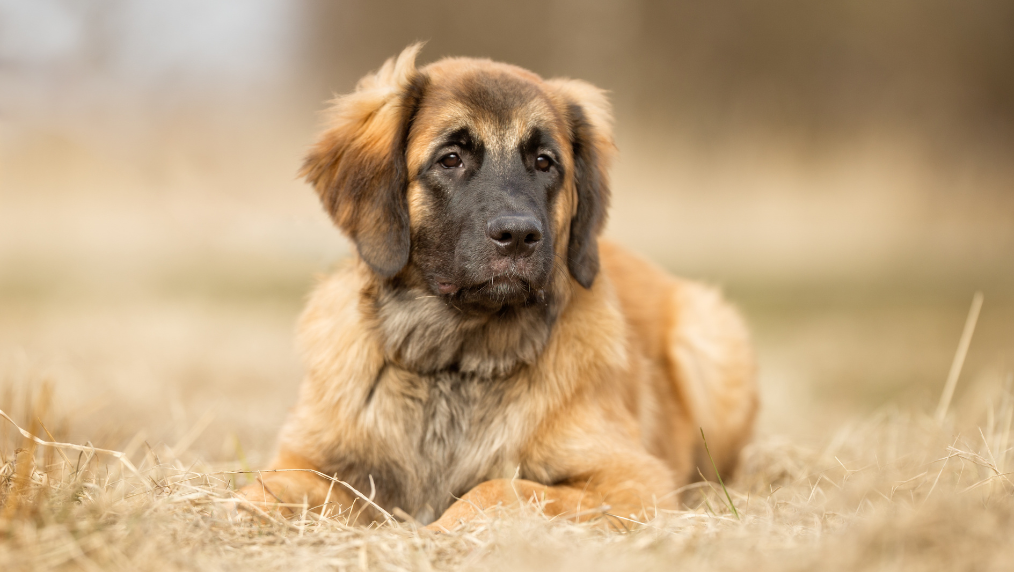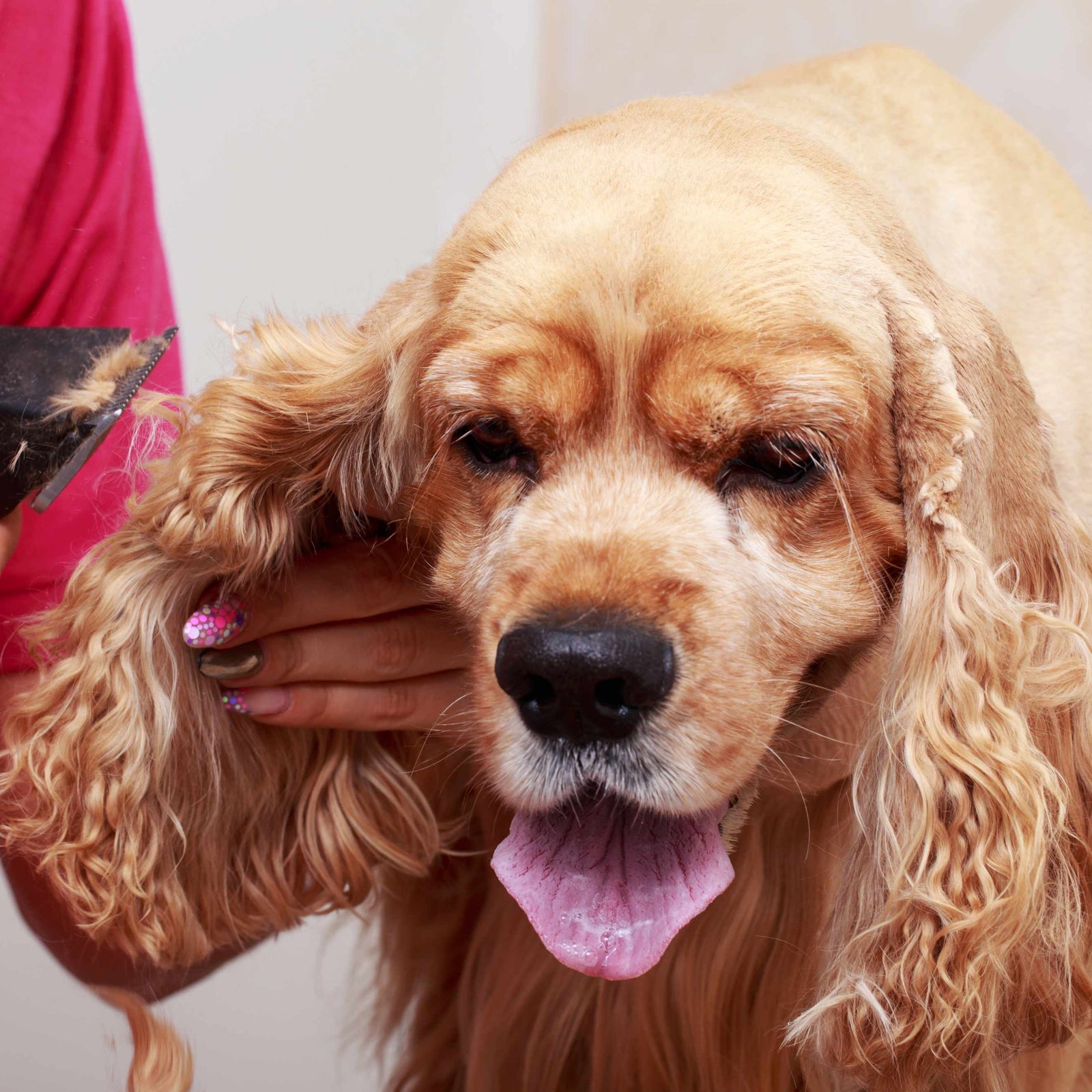
Long-haired dogs are undeniably charming with their flowing locks, but keeping their coats well-maintained requires dedication and proper grooming techniques. In this comprehensive guide, we'll explore the essential steps and tips for grooming long-haired dogs, ensuring furry friends stay healthy, comfortable, and looking fabulous.
Before delving into grooming specifics, it's crucial to understand the unique needs of long-haired dog breeds. Breeds like the Shih Tzu, Afghan Hound, and Maltese require different grooming approaches due to variations in hair types, lengths, and textures. Familiarize yourself with your dog's specific needs to tailor grooming routines accordingly.
Methods for Grooming Long-Haired Dogs
The Routine Brushing Method
Brushing is the cornerstone of grooming long-haired dogs, preventing mats and tangles while keeping their coat healthy and shiny. Follow these steps for the routine brushing method:

- Lay Dog on Back: Gently place the dog on their back (or side), creating easier access to the entire coat.
- Brush Underside: Start by brushing the underside of the dog, focusing on areas prone to matting like the belly and chest.
- Part, Spray, Comb: Part the hair and use a detangling spray if needed. Carefully comb through the hair to remove any knots.
- Brush Back and Sides: Brush the back and sides of the dog, working from the neck to the tail. Pay attention to the natural direction of hair growth.
- Smooth: Use a slicker dog brush to smooth out the coat, ensuring it's free from tangles. This step adds a finishing touch to the brushing process.
Recommended Product: THE LEAVE IN by PRIDE+GROOM PRO
Also Read - Monthly Professional Groomer Interview Series - Joe Zuccarello, MBA
Recommended Product: THE ONLY BRUSH by PRIDE+GROOM PRO
The Bath and Trim Method
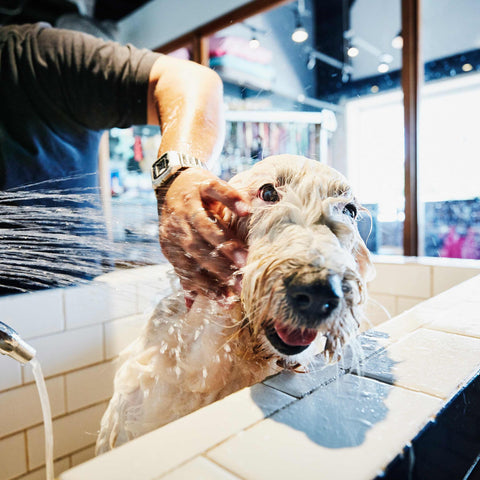
For a more comprehensive grooming session, the bath and trim method is essential. Follow these steps to ensure long-haired dog looks and feels its best:
- De-mat: Before the bath, carefully de-mat any tangled or knotted areas using a slicker brush and comb, and dematting spray.
- Bathe: Use a high-quality dog shampoo and conditioner to thoroughly clean the coat. Pay attention to areas prone to odors, such as the ears and tail.
- Dry: Allow the dog to air-dry or use a blow dryer on a low heat setting. A super absorbent towel is also very helpful. Brush the coat while drying to prevent matting.
- Trim Feet: Trim the hair around the dog's paw pads and between the toes. This helps maintain a clean appearance and prevents discomfort.
- Trim Face and Backside: Use grooming shears to trim the hair around the dog's face and backside, ensuring a neat and tidy look. Be cautious around sensitive areas like the eyes and ears.
Recommended Products: PRIDE+GROOM PRO Coat Specific Shampoos and Conditioner
Long-Haired Dog Grooming Best Practices
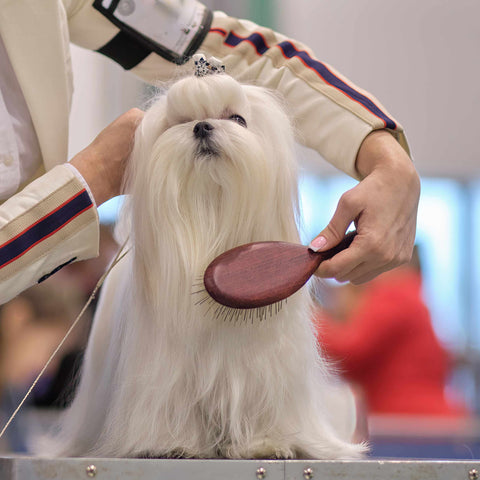
1. Start at a Young Age
Introduce grooming practices to long-haired dogs from a young age. This helps them acclimate to the process, making future grooming sessions more manageable and less stressful.
2. Regular Haircuts
Long-haired breeds often benefit from regular haircuts to prevent excessive matting and maintain a comfortable length. Consult with a professional groomer for advice on the best haircut for a dog's specific breed.
3. Regular Bath
Establish a regular bathing schedule to keep long-haired dogs clean and fresh. Use dog-specific shampoos and conditioners to maintain a healthy coat and skin.
4. Daily Brushing
Incorporate daily brushing into your routine to prevent mats and tangles. This short, regular grooming session helps distribute natural oils, keeping the coat shiny and reducing the risk of skin issues.
Considerations For Long-Haired Dogs
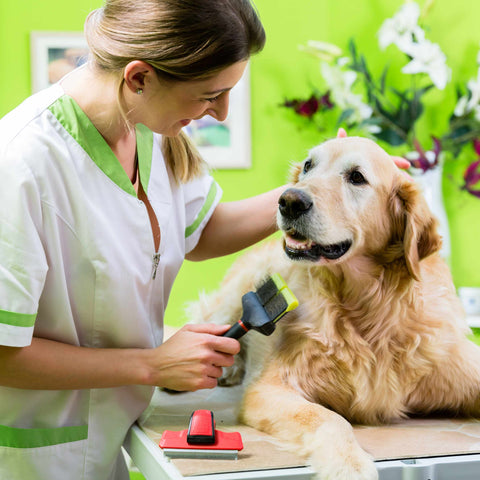
Grooming long-haired dogs can be a rewarding experience, but it comes with its own set of cautions and considerations. To ensure the well-being of furry friend, here are essential precautions and factors to keep in mind:
1. Patience is Key
Grooming long-haired dogs can be time-consuming, especially if the dog is not accustomed to the process. Exercise patience, use gentle techniques, and take breaks if needed to prevent stress for both you and pet.
2. Mind the Sensitive Areas
Long-haired breeds often have sensitive areas, such as the ears, eyes, and paws. Exercise caution when grooming these regions to avoid accidental injuries or discomfort. Use specialized tools and be gentle around these sensitive spots.
3. Beware of Matting
Long hair is prone to matting, which can lead to skin irritations and discomfort for dog. Regular brushing is crucial to prevent mats, and if they do occur, address them promptly to avoid further complications.
4. Choose the Right Products
Use high-quality dog-specific grooming products, including shampoos, conditioners, and detangling sprays. Avoid human products, as they may contain ingredients that can be harmful to a dog's skin and coat.
Recommended Products: PRIDE+GROOM Pro’s All Natural, Salon-Grade Line
5. Watch for Skin Irritations
Keep an eye out for signs of skin irritations, redness, or inflammation during and after grooming. If you notice any issues, consult with a veterinarian to address potential skin conditions or allergies.
6. Regular Veterinary Check-ups
Schedule regular check-ups with the veterinarian to ensure the dog's overall health. They can provide insights into specific grooming needs based on the dog's breed, age, and any underlying health conditions.
7. Safety in Trimming
When using grooming shears or clippers, exercise caution to avoid accidentally nicking dog's skin. If you're unsure about the trimming process, consider seeking professional grooming services for specific areas like the face and feet.
8. Temperature Considerations
Long-haired dogs can be more susceptible to overheating, especially in warmer climates. Trim their coat to a comfortable length, and avoid extended grooming sessions in hot weather to prevent stress and heat-related issues.
9. Tailor Grooming to Breed Requirements
Different long-haired breeds have varying grooming needs. Research and understand the specific requirements of a dog's breed to tailor grooming routine accordingly.
10. Regular Training and Positive Reinforcement
If a dog is not used to grooming, invest time in training and positive reinforcement. Reward them with treats and praise to create a positive association with grooming activities.
Also Read - Do Dog Groomers Need to Be Licensed?
Conclusion
Grooming long-haired dogs is an art that requires dedication, the right tools, and a gentle touch. By following these grooming methods and best practices, ensure that a long-haired dog not only looks its best but also enjoys a comfortable and healthy life. Remember, a well-groomed dog is a happy and content companion.

